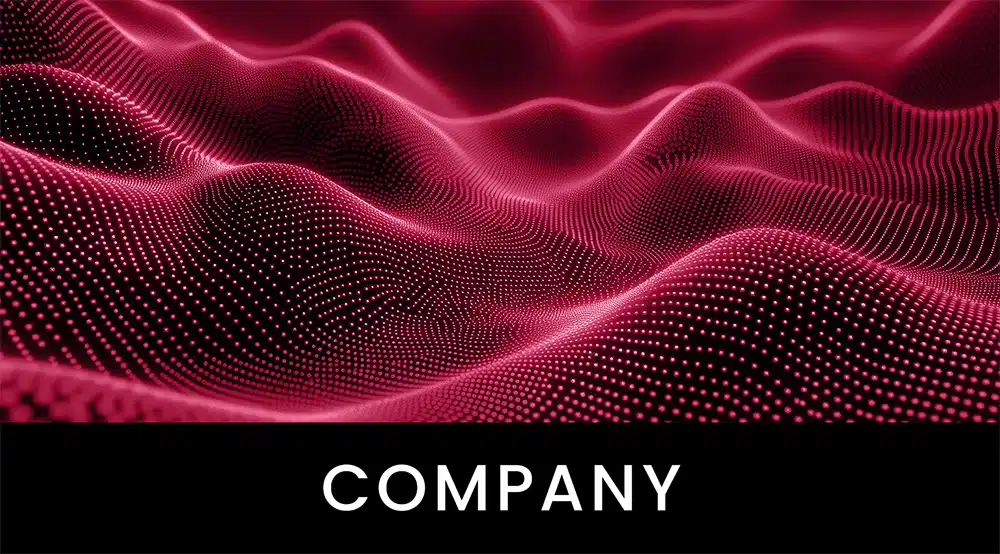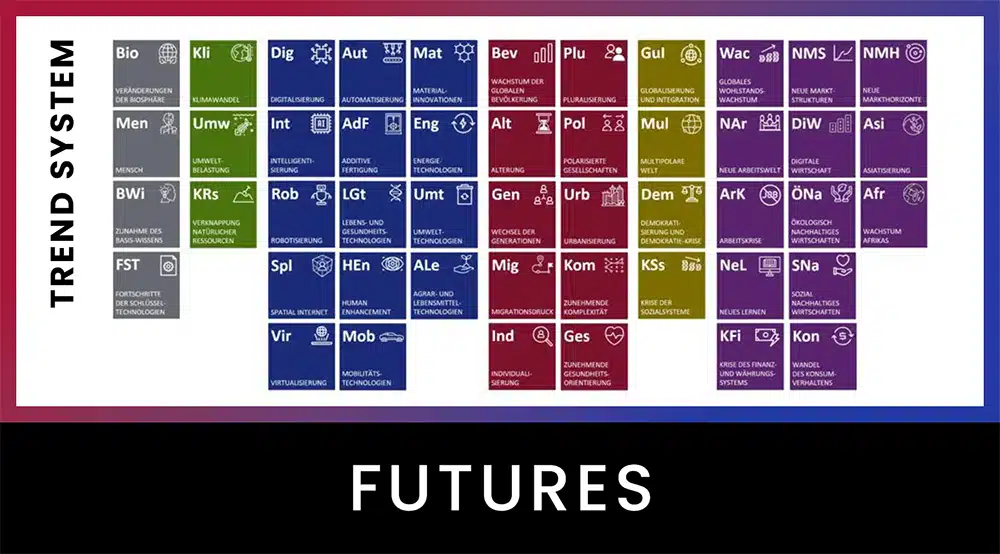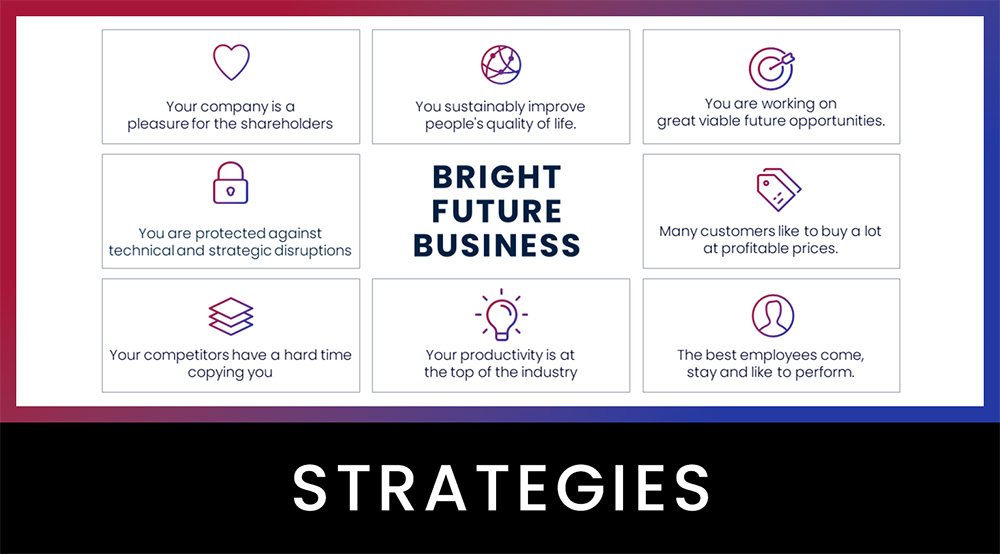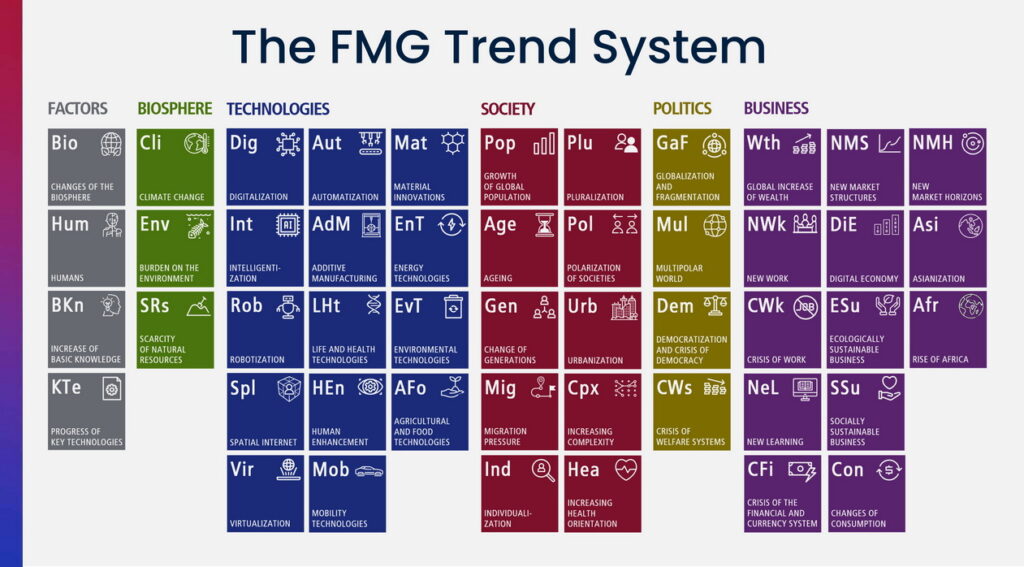Dr. Pero Mićić, 12.08.2020
Hydrogen is the future of the automotive industry. You hear that everywhere. But will that be the case? There are already many articles and videos on this topic. Actually, I thought, the topic is over. So what is the point of this post? Well, there is still quite a lot of arguing, often on a weak knowledge basis. Even very well-known professors make demonstrably false arguments. What I want to give you in this video is a clear summary of all the arguments. Plus arguments in favor of hydrogen fuel cell drives becoming established and minus arguments against. So, will you and most customers be buying and driving hydrogen fuel cell cars in 2030?
There is this widespread hopeful thought. In ten years, we will all be able to drive on hydrogen without any problems, filling up with 800 km of range in just a few minutes, with no local emissions at all. And all is well. Battery electric cars are therefore only a temporary transitional technology, so you might as well buy a combustion engine again.
Germany now has a national hydrogen strategy. Market leadership in hydrogen technologies is the vision. A clear vision and even a strategy to go with it, that’s quite remarkable. That is what is otherwise lacking. But let’s take a closer look.
We are looking here at passenger cars and light commercial vehicles. So the vehicles that you and I use predominantly. And we’re looking at it from the car buyer’s perspective. After all, it is they who will predominantly decide whether the hydrogen fuel cell car or the battery electric car will prevail.
And one more thing: This is not a forecast for 2030, but my assumption for the future. This is a significant difference. Forecasts are supposed to predict the future in 2030. The forecaster wants to be exactly right in ten years. But assuming the future means: After all that can be known today, we assume the following future so that we can make decisions now. And in a month or a year, we review and correct our assumption of the future. And this should also be said: Our clients in the automotive environment are all suppliers to the combustion engine industry. Nobody pays for this video. It is simply my assessment and ours at FutureManagementGroup AG.
Why are the internal combustion engines missing as an option? We covered that in this article: https://www.futuremanagementgroup.com/de/elektroautos-wirklich-die-zukunft/
Argument balance
Let’s draw up a balance of arguments. All these arguments have been put forward by experts and can be checked in the sources below.
Plus arguments speak for the fact that car buyers predominantly opt for HFCEV (Hydrogen Fuel Cell Electric Vehicle, i.e. hydrogen car for short), minus arguments speak against it, so that most opt for BEV (Battery Electric Vehicle, battery car). And there are zero arguments that apply equally to both types of drive.
If I use BEVs for comparison, then of course the leading supplier today, Tesla, which is showing today what the other suppliers will also be capable of in five or ten years, presumably.
Comfort arguments
10 minutes refueling for 500 km (Plus)
With 5 minutes for a refueling of 500, 800 or later even more kilometers, you can refuel much faster with a hydrogen vehicle than with a battery electric vehicle.
It takes another 5 to 10 minutes for a fuel pump to be ready for refueling after one or a few refueling operations, i.e. until the charging pressure is built up again. This means that only four to six cars per hour can be refueled at one pump. But for the foreseeable future, this is still faster than charging a BEV for 500 km.
One future disadvantage should not be overlooked. It will hardly be possible to charge FCEVs faster in ten years than today. It will take 10 minutes even then. In ten years, it will be possible to charge BEVs much faster than today. So the lead is melting away. Solid-state batteries with 500 km charge in five minutes are still somewhat speculative, so we’ll leave them out here.
So a clear plus argument for the HFCEV.
Range like a battery electric car (zero)
The range of HFCEVs is about the same as that of BEVs. Hyundai Nexo has 540 km, Toyota Mirai 500 km, the next generation even 650 km, Mercedes GLC F-Cell 500 km. Unfortunately, however, you can only lease the Mercedes, not buy it, and only if you have a business. For whatever reason. A departure into the future would look different. However, the current electric cars do not match these ranges Tesla Model 3: 560 km, Tesla model S: 640 km.
Greater ranges can be expected from larger tanks or batteries and from efficiency advances in both types of drive. There are announced FCEVs with 800 km and 1000 km range, but these announcements also exist for BEVs, the Tesla Cybertruck with 800 and the Roadster from Tesla with 1000 km. So overall, a zero argument.
Refueling only at gas stations (minus)
You will never be able to refuel a hydrogen car at home, not at a friend’s house, and not at the very least employers and customers, not even in 2030. You always have to drive to a hydrogen filling station to refuel. A BEV is usually charged at home while sleeping or enjoying leisure time or at work and only has the hassle of plugging in and unplugging twice a week. This is perfectly sufficient for almost all drivers, except for the long-distance drivers. Only they have to go to a fast charger for 30 minutes every three hours and drink coffee, eat something and go to the toilet.
Today, a BEV is still really problematic and challenging for tenants without their own parking space. To this end, charging facilities must be created in public parking lots, at shopping markets or at employers’ sites. Utilities are very confident about the possibility of expansion. That’s why I have good reason to believe that there will be major advances in this area in the next few years up to 2030.
You can basically charge a BEV at any outlet, albeit very slowly at about 13 km per hour. With one of these red sockets, CEE with 16A and 11 kW, which can be installed in practically any house and parking lot with little setup, you can charge 50 km per hour, while sleeping, working or doing leisure activities.
The variety of refueling options is also a negative argument against the hydrogen car in the long term.
Hydrogen refueling stations remain much rarer (Minus)
Across Europe, there will be 134 hydrogen refueling stations in August 2020. In Germany, 84, or 60% of all European service stations. This means that you practically can’t go on vacation by car, because the remaining 50 hydrogen refueling stations are spread all over Europe. France 5, Austria 5, Switzerland 3, Belgium 2, Netherlands 3.
But it’s bound to get better in the future, right? This can be Just know that a hydrogen fueling station, a single one, costs over 1 million euros to build and is also expensive to operate, while a charging station with 6 to 8 charging stations costs a tenth, a little over 100K euros, and requires little maintenance. More about that later.
The current and presumably future number of refueling options is a minus against the hydrogen car.
Benefit arguments
The cargo space is smaller (minus)
The models to date all have a significantly smaller trunk than BEVs because a fuel cell vehicle simply has to accommodate more components.
For reasonable ride well suited (zero)
The performance of an HFCEV is absolutely sufficient for sensible and leisurely driving. As with the BEV.
Less suitable for dynamic driving (minus)
If you want a lot of acceleration, and you want it more often, you will have less fun with an FCEV than with a BEV. If you want acceleration values of 4 seconds or less from 0 to 100, which quite a few still like, you can’t do that with today’s HFCEVs because the small buffer battery doesn’t allow sustained dynamic driving. And if the battery were bigger, you could do without the fuel cell and the tan k and have a BEV.
Safety is lower (minus)
Hydrogen tanks are now just as safe as gasoline and diesel tanks. But all three types of tanks are more dangerous to fire than batteries. BEVs are at least five times less likely to burn than internal combustion vehicles running on gasoline and diesel – in percentages, of course, not just in absolute numbers. That’s what the ADAC says. Some studies even say 20 times less often, based on the distance driven. But let’s stick with five times rarer.
A hydrogen filling station has already exploded in Norway. A charging station not yet.
Electricity is transported via power lines. Hydrogen has to be transported to the filling stations by tanker trucks, incidentally ten times more trucks than for gasoline and diesel, as we will see later. Safety is therefore more of a minus argument against the hydrogen car.
Cost arguments
Triple energy requirement (minus)
Fuel cells are energy converters. First, electricity must be consumed to produce hydrogen, and then the hydrogen must be used again to generate electricity. In each case with high energy losses and correspondingly reduced efficiency. Thus, for purely physical reasons, FCEVs can never be as efficient as a battery that directly stores and directly delivers electricity.
Even if FCEV technology makes great strides, it would take the discovery of new rules of physics to make up for this efficiency disadvantage.
Footnote: It would actually be more efficient, i.e. more environmentally friendly and cheaper, to use the hydrogen at the filling station to generate electricity and use it to charge electric cars. Apart from the loading time.
Yes, there is still direct combustion of hydrogen in internal combustion engines, which would work with some modification. But this has a much worse efficiency, even worse than gasoline and diesel. BMW, for example, said goodbye to this as early as 2009.
Second footnote: EFuels have a maximum efficiency of 15%, so they are not an alternative for mass automobility.
There are several reviews comparing the efficiencies of internal combustion vehicles, hydrogen fuel cell vehicles, and battery electric vehicles, and each is controversial in its details. But if we look at the basic ratio, we can state that of 100% energy used for an FCEV at the source, about 20% to a maximum of 30% arrives at the wheels.
Of 100% energy used for a BEV, about 70%-90% ends up on the wheels. From my own experience I would doubt the 90%, let’s take the 80%. The respective mean values are 25% and 75%. Thus, we arrive at the simplified statement that HFCEVs require three times more energy than BEVs. There are also calculations that arrive at five times the amount of energy. But let’s put that aside for a moment.
So anyone who asks where all the electricity for BEVs is supposed to come from and then demands that hydrogen must be the solution has clearly not done their physics homework.
Even if all cars in Germany were fully electric, we would only need a maximum of 20% more electricity in Germany. By the way, one third of this 20% is already sold abroad or given away. But if all cars in Germany had hydrogen drives, we would need at least 60% more electricity. And then that’s a whole other enormous challenge.
How is the car buyer affected by this? Quite simply, the energy costs of an FCEV for the same distance must necessarily be three times higher than with a BEV. There is no need to worry about efficiencies and the regenerative nature of the electricity. It will count what comes out of the wallet.
Some say that efficiency doesn’t matter after all if you have energy in abundance. First, we are far from having renewable energy in abundance, and second, energy will still not be free. Who would voluntarily pay three times more when they can pay a third for the same service?
The production of hydrogen will only become cheaper if energy becomes cheaper. However, this will also make electricity for BEVs cheaper to the same extent. As electricity becomes more expensive, both types of propulsion will become equally .
Note, of course, that the weight of the vehicles with both types of drive is already included in these calculations. The weight hardly differs anyway. A Toyota Mirai weighs about the same as a Tesla Model 3 with the same range. By the way, a 3-series BMW also weighs almost exactly the same as a combustion engine.
Energy efficiency and thus energy costs are a very strong minus argument against the HFCEV.
The service life is shorter (minus)
The best fuel cells have a service life of up to 450,000 km. Today’s batteries are similar, but Tesla will soon introduce a battery for 1 million miles, or 1.6 million km, which will still have 70-80% of its capacity after that. It is unlikely that fuel cells will make such a leap after decades of research.
Electric cars have also been around for a long time, but not lithium-ion batteries for cars. For them, the development practically only started twelve years ago.
Rechargeable batteries are very stable in practical use. It almost never happens in reality that a whole battery simply breaks. Fuel cells are rather sensitive.
A battery is considered ripe for second life at 70-80%. This is followed by another 10 or more years as stationary storage in homes or businesses. This second life is also possible for fuel cells in principle, but it begins earlier and is shorter than for rechargeable batteries.
As a result, the roughly equal purchase price of HFCEVs and BEVs is spread over fewer years of the powertrain’s service life in the case of HFCEVs, and thus the loss in value per year is higher.
The loss in value is higher (minus)
The depreciation depends on the purchase price and the service life. We have already mentioned the lifetime disadvantage. The purchase price in turn depends heavily on the components installed and the number of units sold.
BEVs are much simpler in design and can basically be built smaller than FCEVs. Most providers haven’t even started with the small BEVs yet. The price reduction potential is therefore better for the BEV.
In August 2020, there were only around 600 hydrogen cars on the road in Germany, but around 180,000 battery-powered cars. The number of BEVs is growing exponentially. BEVs are being pushed hard by Tesla, many Chinese, Renault, VW and others. FCVs are still developing very hesitantly, despite decades of research and development.
China has cut subsidies for BEVs and will soon abolish them altogether. That is absolutely right, because the better one prevails on the market anyway. Subsidies are almost always unnecessary and harmful. But for now, China has only cut subsidies for small-range BEVs to give the cars more range and make them more suitable for everyday use. In China, internal combustion vehicles are to be completely replaced by BEVs. HFCEVs are only promoted to a relatively small extent. The number of BEVs will therefore be enormously higher than that of FCEVs.
As a result, HFCEV buyers will have a higher depreciation per year.
Maintenance is more expensive (minus)
FCVs have a much more complicated structure. They have everything an electric car has, plus a sensitive fuel cell, a high-tech tank and other specific components. Fuel cells must be dehydrated against sub-zero temperatures, preheated for operation, cooled during operation.The intake air must be very clean and heavily filtered to protect the cell membranes.
Fuel cells are best at providing constant energy. So that you can accelerate more with your car, and also so that the fuel cell can be preheated, you need a battery, albeit a very small one. The small battery in an HFCEV has to withstand many more charging cycles than a large battery in a pure BEV and is therefore degraded more quickly.
The tank, meanwhile, is a masterpiece of engineering. After all, it must withstand 700 atmospheres of pressure. 200 to 300 times more pressure than in your tires. In the meantime, hydrogen hardly ever escapes through the tank walls, but the tank is expensive to produce and must be tested and maintained. It takes up as much space as a diesel tank, although only a few liters can be stored. This makes it clear that an FCEV cannot be and will not be cheaper to maintain than a BEV, even in the long term.
There are those who say that hydrogen cars are also being promoted so that customers will continue to have to leave a lot of money at the garages. However, it will not be possible to hide these higher maintenance costs from customers. You will recognize which drive is more expensive and which is cheaper to maintain.
Infrastructure costs are much higher (minus)
The costs for the infrastructure, i.e. the necessary amortization of the investments, will ultimately have to be borne by car buyers and drivers. And this infrastructure has to be almost completely The electricity infrastructure already exists for the most part and only needs to be expanded gradually.
Hydrogen storage is dangerous and therefore highly regulated. Production, transportation and refueling stations must be intensively secured and audited. The mandatory tests and maintenance for a hydrogen filling station alone are expected to cost over half a million euros per year. Such costs are far from being incurred by charging stations.
If hydrogen is not produced at the filling station, which would increase the cost per filling station from one to several million, the hydrogen must be transported to the filling station by trucks. Also on the truck you need 700 bar pressure or cooling to -253 degrees. Over the entire distance. These are very expensive tanks and very expensive trucks.
A normal tanker truck can only transport significantly fewer kWh in the form of hydrogen than in the form of diesel or gasoline. It is estimated that hydrogen mobility would require ten times the number of tanker trucks compared to the current fuel supply at refueling stations. All loaded with quite dangerous hydrogen.
Pipelines and the gas network are out of the question from a purely technical-physical point of view, because they would have to be built from scratch for hydrogen, every inch of them with the expensive technology of tanks. The existing gas network proposed by Prof. Lesch is completely unsuitable.
Instead of liquefying hydrogen at 700 bar pressure or cooling it to minus 253 degrees, it could also be bound in organic substances such as dibenzyltoluene. This is what is known as a liquid organic hydrogen carrier, LOHC. This could save the costs for compression or cooling, but then the efficiencies would be significantly worse, because the hydrogen would have to be additionally bound once and then released again. In addition, you would have to have a huge tank in the car, so efficiency drops again. And the number of tanker trucks would be many times greater.
Conclusion: Because hydrogen requires an extensive and expensive infrastructure for production, transport, thousands of refueling stations, the costs can practically never be anywhere near as low as the costs for the power supply of BEVs.
The customer doesn’t care, you say? Well, he or she has to pay for it all. And then customers become very critical and cautious.
Environmental arguments
100% renewable energy is possible for both (zero)
HFCEVs, like BEVs, can potentially run on 100% renewable energy. So that’s a null argument that applies to both types of drive.
Both types of vehicle can also be produced with renewable energy in principle. However, that is still a long way off, even though Tesla has announced that in a few years it will also be manufacturing the batteries with regenerative energy, i.e. without any CO2 backpack.
The carbon dioxide load is equal (zero)
Today, the batteries are only partly produced with renewable energy and the hydrogen is mainly produced from natural gas. So for the time being, there are problems on both sides. And both have the potential to be manufactured and driven entirely without CO2 emissions.
A study by Fraunhofer on behalf of H2 Mobility states that HFCEVs are more climate-friendly than BEVs from a range of 250 km. But the client is a hydrogen consortium. And they recommend building both technologies side by side. Customers will have to make a choice. HFCEV or BEV. Unfortunately, CO2 emissions will not be the central criterion here.
And should a complete hydrogen infrastructure really be built despite existing electricity infrastructure? To then power only part of the cars while the other charges electricity? From an economic point of view, that’s pretty nonsense. From the customer’s point of view, convenience, benefits and costs will be decisive.
Since both cause similar CO2 pollution and can potentially become CO2 neutral, I rate this argument as a null argument.
Less Critical Raw Materials (Plus)
The HFCEV can be said to have a less critical raw material situation. Essentially, only platinum is discussed there, but it has already been greatly reduced.
In the case of the BEV, there is an extensive and predominantly emotional raw materials debate. The most pertinent argument is the relatively small amount of cobalt extracted through illegal child labor. Child labor is unacceptable from our point of view, period! However, cobalt is a byproduct of copper production, so virtually the entire electronics industry would have to be blamed. It wasn’t until the BEV, however, that this became an issue. It is important to know that the cobalt content in contemporary rechargeable batteries has already been reduced to one-sixth and that rechargeable batteries without any cobalt at all are expected.
Drinking water consumption from lithium extraction has been shown to be a misrepresented problem. Eleven avocados or two beef steaks require just as much water as a large battery for an electric car. Moreover, there is enough lithium on earth to electrify all cars, even more so with a 95% recycling rate. And finally, lithium is not a necessary element for batteries for all eternity. By the way, there are no rare earths in rechargeable batteries.
Let’s stay with the somewhat emotional plus argument for the HFCEV.
95% recycling rate is possible for both (zero)
Rechargeable batteries can be recycled up to 95%. because even after 500,000 km and 1 million km, everything you have installed is still in the battery. Let’s assume that this is also the case for fuel cells and hydrogen tanks, although there is little information on this. The only problem is that there are and will probably be many more BEVs than FCEVs, so that investments in recycling capacities will be more worthwhile for rechargeable batteries.
A carefully fair zero argument.
Arguments on the future of the automotive industry
Market success has so far failed to materialize (minus)
What is the reality in the market today? Most car manufacturers are clearly focusing on BEVs as the successor to the combustion engine. Yes, there are still few exceptions like Toyota and Hyndai. But there are few and the sales figures are already drastically behind those of BEVs. Even of the all-new and quite attractive Mirai, Toyota, the world’s largest automaker, plans to sell only 30,000 units.
In Germany, although it has over 60% of the European hydrogen refueling stations, there are just 600 FCEVs on the road. But now already about 180,000 BEV.
The growth rate from 2018 to 2019 was 64% in Germany, and 54% the year before. Worldwide 42% and 55%. The exponential growth is clearly visible. The market share is also growing exponentially. HFCEVs are being severely discounted.
Almost everyone who once had a modern BEV whose manufacturer has organized the charging infrastructure well, which at the moment is only Tesla and soon others, stays with it after the experience on the market and does not switch to the combustion engine and not to the HFCEV again.
Unless a nationwide hydrogen infrastructure suddenly emerges, including in other countries, which can be virtually ruled out, the race is already over. This opportunity existed 20 years ago, when no one knew how to build batteries with such high energy density and reliability. But still now? Rather not.
Political energy independence is delayed (minus)
If we really want to become independent of the not exactly pleasant suppliers of crude oil one day, of the far from environmentally friendly crude oil industry, then we should not rely on a system for which we need three times as much regenerative energy. With FCEVs, our chance for strategic energy independence would become very remote.
Low prospects of success on the global automotive market (minus)
Some are calling for German and European manufacturers not to get involved with BEVs because so many jobs will be lost. They should focus on FCEVs to save jobs at automakers, suppliers and the engineering industry. I can’t believe a supposed automotive market expert actually believes this. But he has written publicly.
So the suggestion is, let’s do the complicated, the inefficient and the expensive so we can save our industry. We will somehow be able to sell the customers on the fact that they will have to pay much more, will still have to go to the workshop more often and will only be able to fill up at a few gas stations. Everything as before.
I can understand this argument. Very many of our clients are suppliers to the combustion engine industry and machine builders. But that would be a very short-sighted and, in the end, suicidal lethal strategy. Why? After all the arguments, hydrogen mobility is the more expensive and inconvenient solution for customers. So the auto industry would have to force or entice the majority of its customers to do so. Trust has been tarnished anyway.
This could work if there were no competitors. Tesla and many other Western manufacturers are not the only ones focusing on BEVs. China wants to replace internal combustion vehicles entirely with BEVs. HFCEVs play virtually no role in this. For exactly the reasons viewed here. To whom and how do we want to sell our hydrogen cars in the world, if hardly anyone outside of Germany thinks about building a sufficient hydrogen infrastructure?
Customer acceptance is missing (Minus)
Since car buyers are generally not stupid and look closely, the German automotive industry would commit suicide by focusing on hydrogen. Customers would continue to drive their internal combustion vehicles and then gradually switch to BEVs, which the German industry then offers too few of.
What was previously inconceivable could then easily happen: We would start buying significantly more cars from China. E-cars are excellent at this. Take a look at Volvo’s new Polestar. This is a Chinese car!
If the German automotive industry were to actually try to sell customers a system that is more expensive and less convenient in several respects t, we will not save a single job, but will achieve exactly the opposite due to global competition from BEVs: Most jobs will be lost.
Fortunately, however, the automotive industry is more informed and reasonable than many a supposed automotive expert. It is already leaving hydrogen to the left.
Conclusion and future assumption
Some will now say that it is better not to buy a car at all. Yes, hardly anyone needs a one or two ton vehicle to get from point A to point B. But people want to have and buy cars, at least until the autonomous vehicles arrive.
We are talking about passenger cars and light commercial vehicles. But even Nikola, the yet-to-be-named hydrogen truck manufacturer that has never built more than a prototype, has included purely battery-powered trucks in its previously only-thought-of lineup. Why only?
Hydrogen is far too expensive, and therefore too valuable, to power cars, and presumably trucks as well. Hydrogen has great benefits in stationary use in industry in very many places and therefore great potential. In stationary operation, the efficiencies are also significantly higher. As a reducing agent in the steel industry, for example, hydrogen would greatly reduce CO2 emissions because carbon monoxide from burned coal is currently used.
In addition to stationary use in industry, ships and aircraft can be very good applications for traffic and transportation.
Even if, after decades of research, also with high public funding, it is possible to make the production of hydrogen more efficient and cheaper and to find investors for thousands of hydrogen filling stations within a very short time, new rules of physics would have to be found to make a hydrogen car better and cheaper than a purely battery electric car from the customer’s point of view.
The idea of a mix of FCEVs and BEVs as the future is nonsensical. Because even for only half of FCEVs, the full infrastructure is needed. The cost disadvantages then become much greater.
So if you read ads like “Te sla long outdated, here are the insider tips on hydrogen shares”, I would definitely steer clear of them.
My assumption about the future, not a forecast, is therefore that in 2030 customers will not buy diesel or gasoline-powered internal combustion engines, not hydrogen cars, but battery-electric cars by a wide margin. And that providers will follow this trend.
How do you see it? Do you have any other or better arguments? I look forward to your comments.
If you find my assessments convincing, share this post to your friends and acquaintances and on social networks. So that we look more realistically into the future and so that we make better strategic decisions in our companies.
By the way, if you want your company to benefit from the trends and technologies of the future and develop and implement a robust future strategy, I invite you to join my Leader’s Strategy Program. In this I advise and accompany you to rethink and build the future of your company.
Placeholder
Please also follow these links:
► Free video crash course THE FUTURE OF YOUR BUSINESS
► BUSINESS WARGAMING for robust business and future opportunities
► LECTURES AND KEYNOTES by Pero Mićić for your employees and customers
Placeholders
I wish you a bright future!
Have a bright future!
Placeholder
Placeholder
Sources
Overall view
- Prof. Doppelbauer on electromobility-compressed: Doppelbauer_-_Electromobility-compressed__2_.pdf
- PKW 2.0 – The car is reinvented – YouTube: watch
- Strategy paper for electric cars: Strategy paper%20Elektroautos%20Stand%202019-10%20V1.5.pdf
- Waiting for the hydrogen car – but the technology has no chance against batteries: https://www.focus.de/auto/elektroauto/news/efahrer-chef-erklaert-warten-auf-das-wasserstoff-auto-darum-hat-die-technik-keine-chance-gegen-akkus_id_11365397.html
- Hydrogen car technology, offer, tests – ADAC: wasserstoffauto-so-funktioniert-es
- VDE study fuel cell: study-fuel-cell-data.pdf
- Do hydrogen cars have a future- – Spektrum der Wissenschaft: 1523803
- Myths about the hydrogen car – The truth about the fuel cell – auto motor und sport: hydrogen-car-fuel-cell-co2-neutral-battery-lithium
- Status Electromobility 2020- The Endgame after the Corona Crisis: 341670568_Status_Electromobility_2020_The_Endgame_after_the_Corona_Crisis
- The raw material shortage is overcome – Energiewende- Schafft endlich das Brennstoffzellenauto ab! energiewende-schafft-endlich-das-brennstoffzellenauto-ab-2006-149263-2.html
- Fuel cell- A billion-dollar grave for car manufacturers – Auto & Mobil – SZ.de: alternative-antriebe-die-brennstoffzelle-ist-ein-milliardengrab-fuer-autohersteller-1.3922234
- Hydrogen cars, fuel cell – the next big thing after the botched energy transition: hydrogen-cars-fuel-cell-the-next-big-thing-after-the-botched-energy-transition
- Hydrogen – Energy Future or Expensive Dead End – Does LOHC- – YouTube: Hydrogen – Energetic Future or Expensive Dead End – Does LOHC Help? – YouTube
- Fuel cell in the car- Better than lithium batteries- – Harald Lesch – YouTube: watch
- Prof. Lesch and the Public Law Media – Science or red-green mouthpiece – YouTube: watch
- Harald Lesch on electric cars – old numbers, old myths – YouTube: watch
- Harald Lesch is wrong- Why the fuel cell is not the future – EFAHRER.com: Harald-Lesch-is-wrong- Why-the-fuel-cell-is-not-the-future_10815
- Dibenzyltoluene as hydrogen storage of the future ‘ HZwei-Blog: dibenzyltoluene-as-hydrogen-storage-of-the-future
- Liquid organic hydrogen carriers – Wikipedia: %C3%
Energy demand and energy costs
- Nikola Plans to Enter the Market at an Uncompetitive Price Point, & More – ARK Invest: issue-226
- Which is more efficient- E-battery or hydrogen: battery-or-fuel-cell–that-is-the-question.html
- VW electric cars are much more efficient than hydrogen vehicles: vw-electric-car-fuel-cell-hydrogen
- Electric in road transport- battery vs. fuel cell vs. power-to-X ” Future mobility: electric-car-fuel-cell-synthetic-fuel-ptx-ptl-cost-infrastructure-commodity-energy-requirement-efficiency
Security
- How safe are hydrogen vehicles – EMCEL: safety-of-hydrogen-vehicles
- Norway- Explosion at hydrogen filling station – electrive.net: norway-explosion-at-hydrogen-filling-station
- Status and Q&A regarding the Kjørbo incident – Nel Hydrogen: status-and-qa-regarding-the-kjorbo-incident
- Air Products and Chemicals, Inc. Tube Trailer Module Hydrogen Release and Subsequent Fire: HZM1902.pdf
Environment
- Fact check- Which car has the best climate and environmental balance: index.php
- Climate balance of -electricity-based drives and fuels: climate-balance-of-electricity-based-drives-and-fuels-1
- Study- GHG emissions from battery & hydrogen cars: greenhouse-gas-emissions-battery-hydrogen-study-fraunhofer-ise
- Electric car, diesel or hydrogen – How do we stop the climate crisis – YouTube. Electric car, diesel or hydrogen – What will we use to stop the climate crisis? – YouTube
- Lifetime of a fuel cell- durability info: lifetime-of-a-fuel-cell-durability-infos_97643
Market
- ZSW- inventory of e-vehicles grows to 7.9 million units: zsw- inventory-of-e-vehicles-grows-to-79-million-units
- Electromobility- inventory grows to 240,000 e-vehicles: elektromobilitaet-bestand-waechst-auf-240-000-e-fahrzeuge
- eMobility dashboard July- 16,798 pure electric passenger cars: emobility-dashboard-july-16-798-reine-electric-passenger-car
- 2021 Toyota Mirai fuel-cell sedan reveals striking new look: 2021-toyota-mirai-revealed
Future of the automotive industry
- Researcher- fuel cell -ecologically very sensible: researcher-fuel-cell-oecologically-very-sensible
- Only hydrogen can save the German car industry: only-hydrogen-can-save-the-German-car-industry
- Mechanical engineering association believes in hydrogen drive: maschinenbauverband-betont-potential-von-hydrogen-drives
- Hydrogen as the fuel of the future: 25192302.html


































